PAU, France -- Building relationships and strong ties among servicemembers and armies across Europe is vital to the U.S. Army Europe mission. Paratroopers from the 21st Theater Sustainment Command's 5th Quartermaster Company helped strengthen those ties during combined airborne training and operations, Feb. 1-4.
The exercise, which took place at the French parachute school in southwestern France, was designed to strengthen ties and relationships with French airborne forces.
Airborne units from several nations have trained at the school, whose training is considered some of the most detailed and challenging in the world.
Chief Warrant Officer 2 David Fabunan, the officer-in-charge of the combined operation said it took more than three months of planning to coordinate the event.
"The school was very accommodating. Their (noncommissioned officers) and officers were very professional and, all in all, it was very informative," said Fabunan.
"Our Soldiers got a lot out of this. Most of our Soldiers are parachute riggers, and it gave them a better opportunity to see another country's equipment, he added.
"It is a wonderful opportunity to jump with our foreign allies and see their equipment versus the U.S. equipment," said parachute rigger Spc. Irene Lenge.
During the combined operations, jumpmasters from the 5th trained 40 French paratroopers using U.S. parachute equipment. The training culminated with a jump from the tailgate of a U.S. Air Force C-130 Hercules cargo plane.
In return, the U.S. paratroopers were trained by French jumpmasters using French equipment. The American Soldiers made two jumps from the rear exit doors of a French air force C-160 cargo plane.
During a joint ceremony on the last day of the event, 10 U.S. paratroopers were awarded French jump wings and 40 French paratroopers were awarded the U.S. jump wings.
Following the ceremony the American paratroopers took a guided tour of Pau's Museum of Parachuting, where they viewed exhibits on the history of French airborne forces.
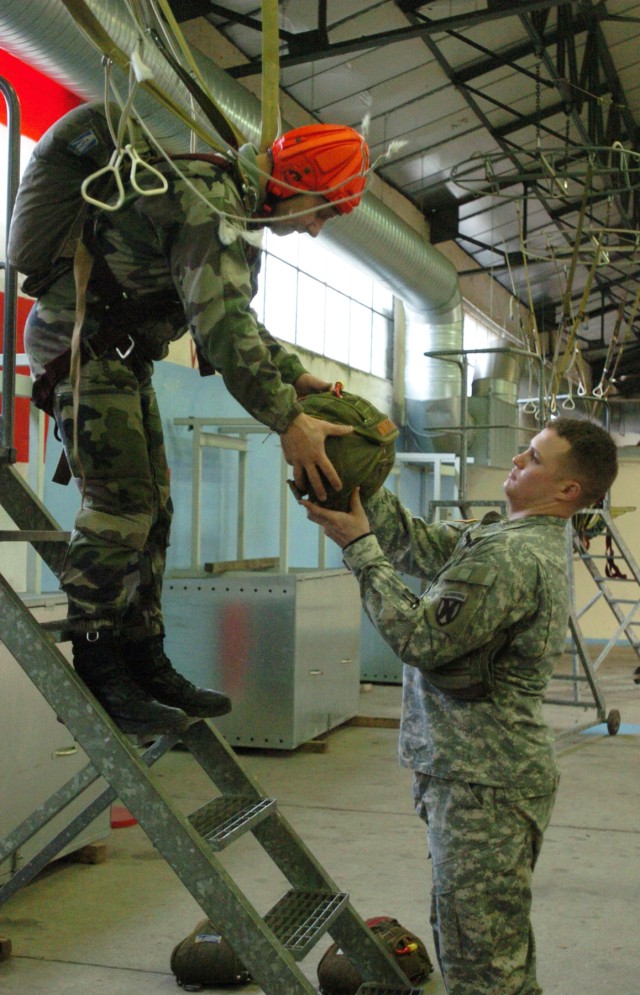
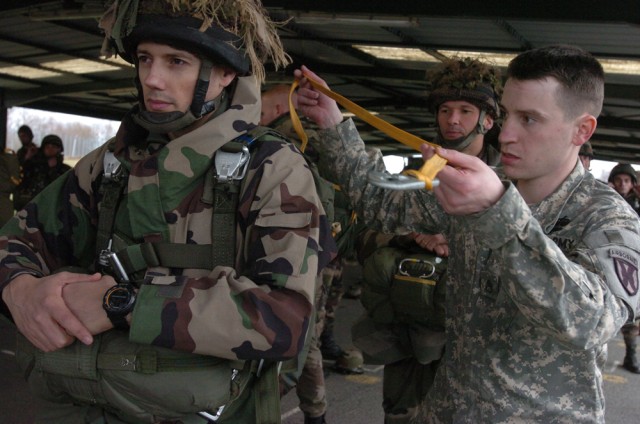
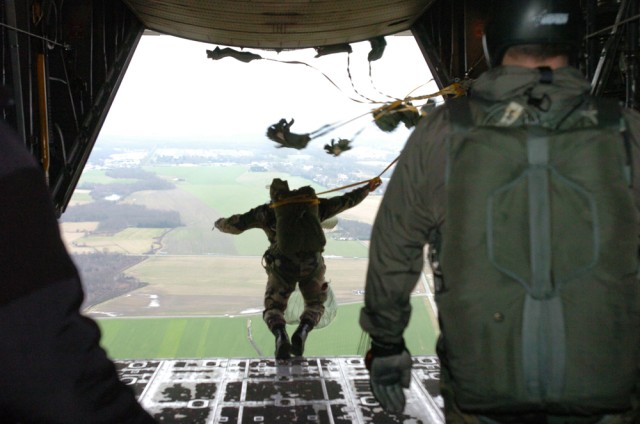
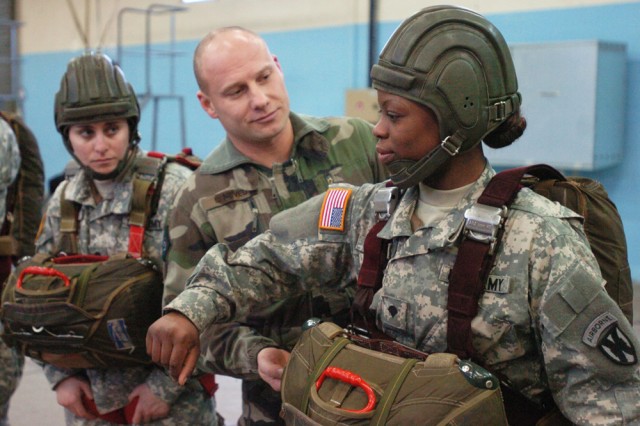
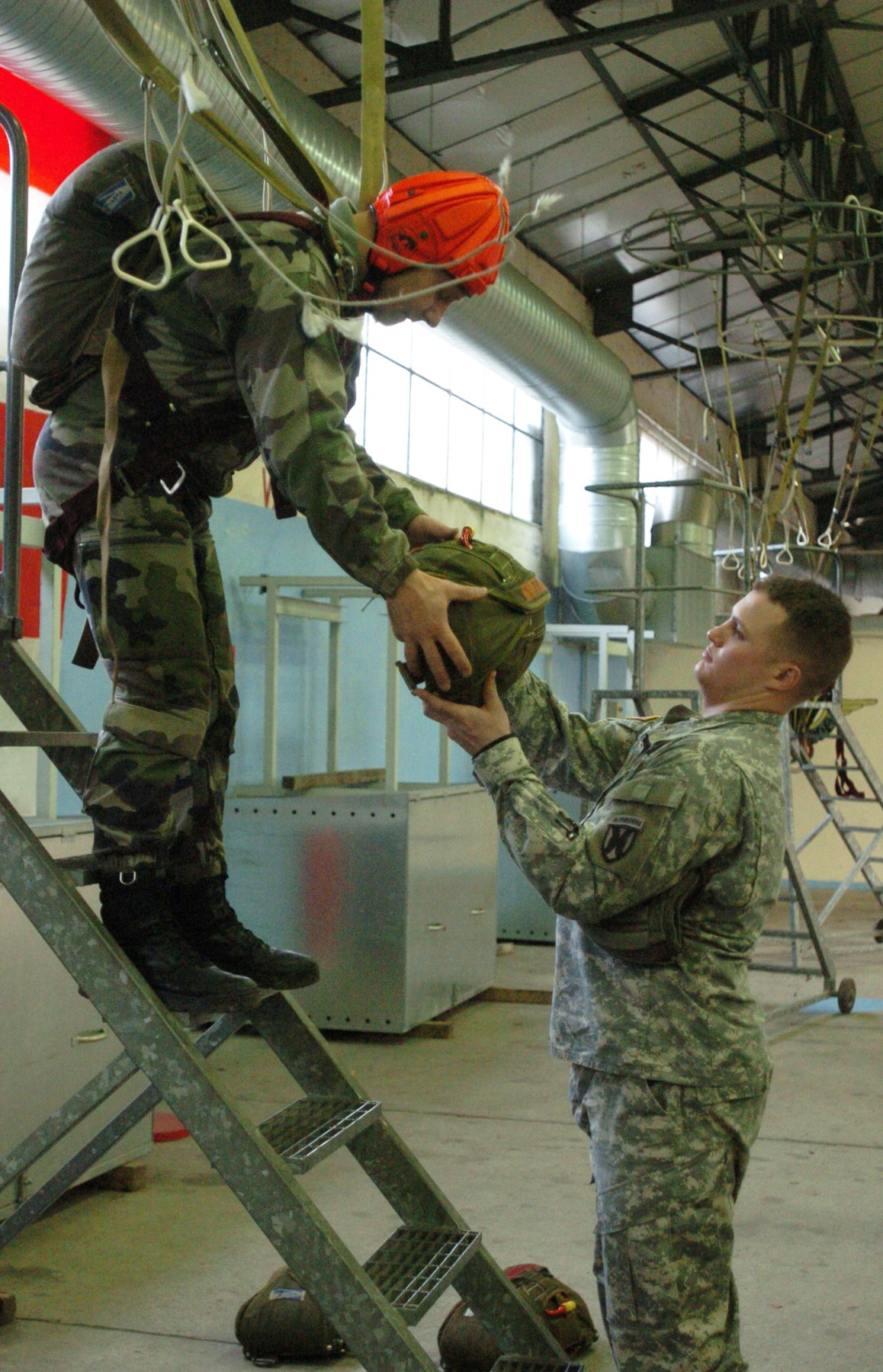
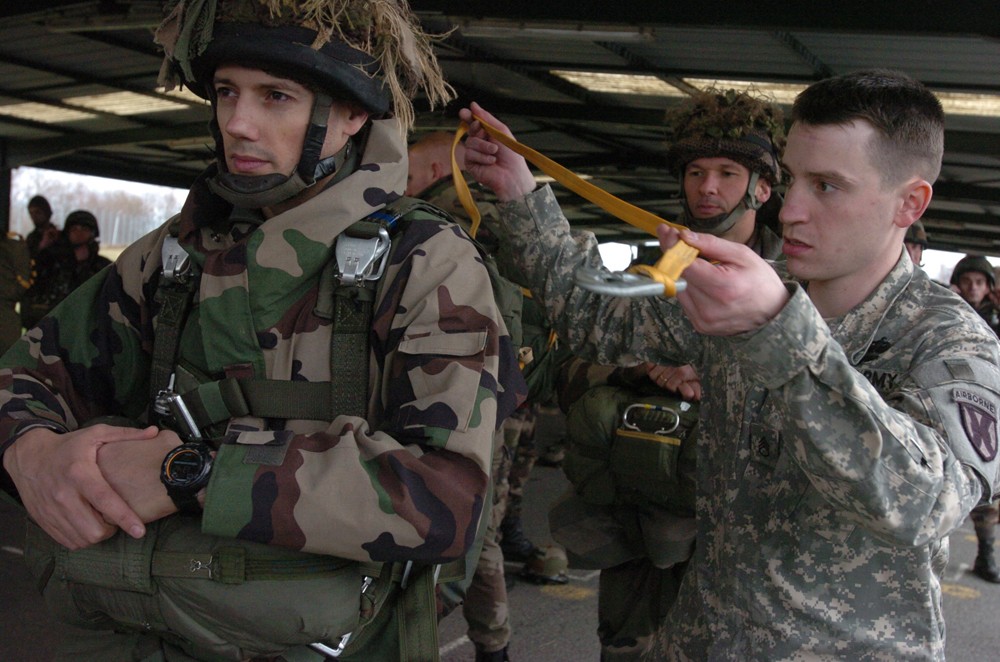
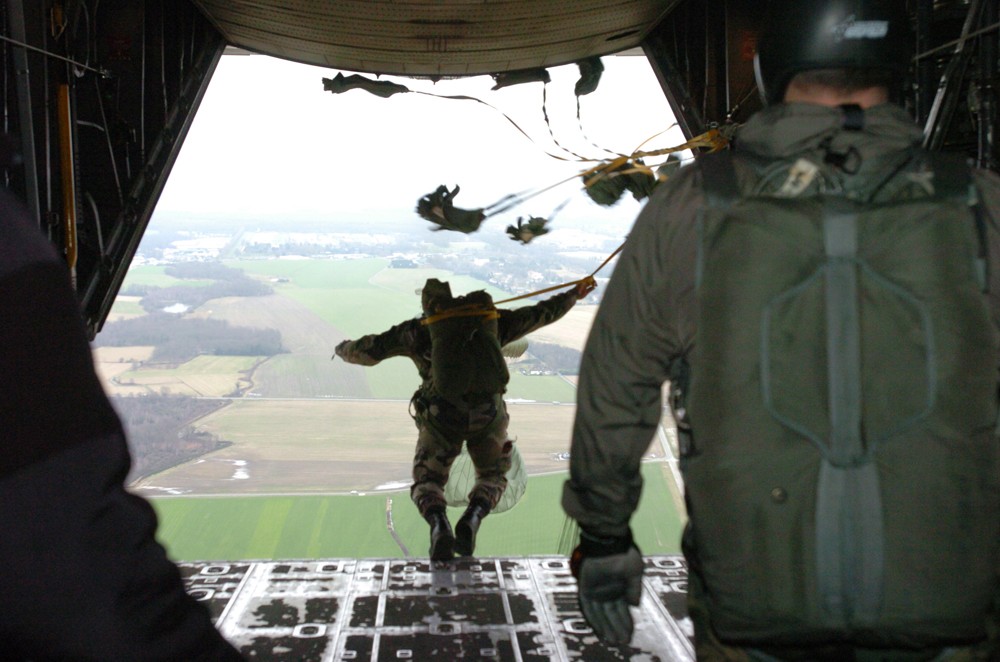
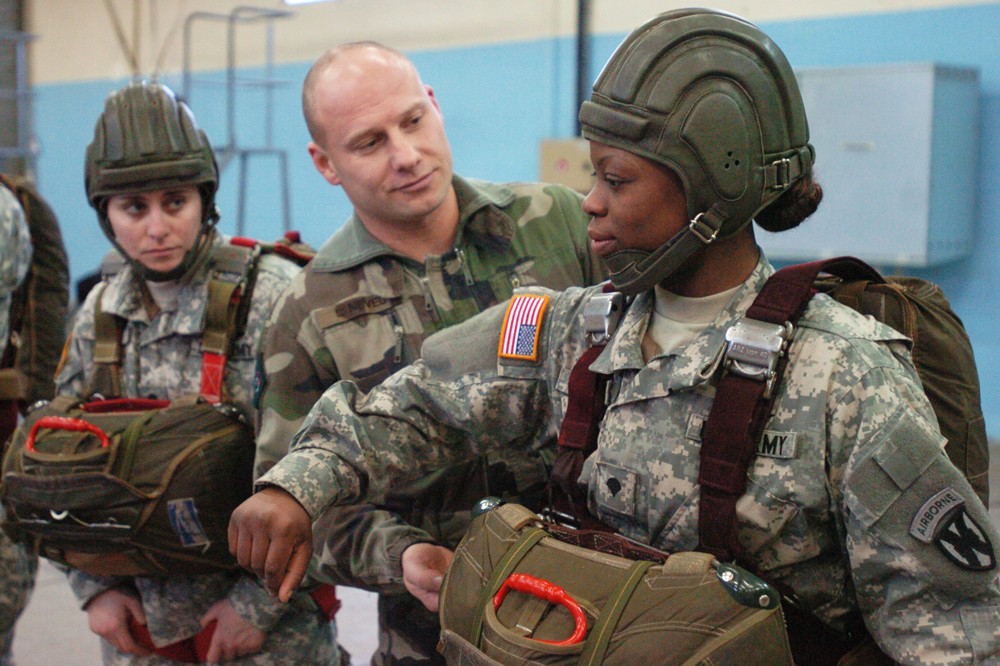
Social Sharing